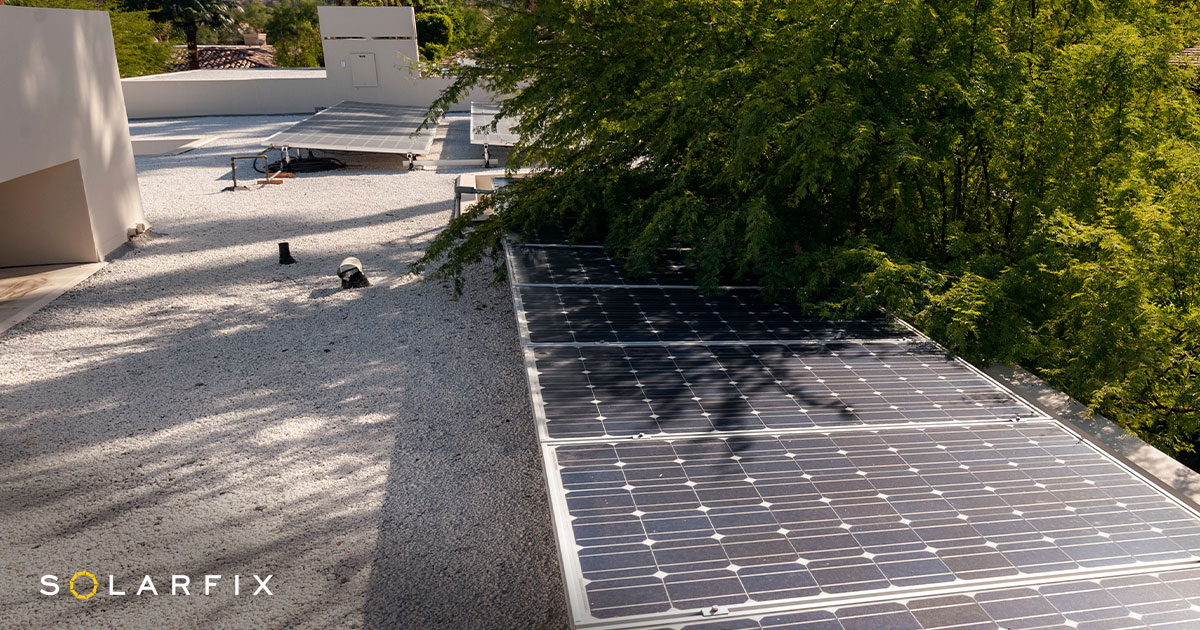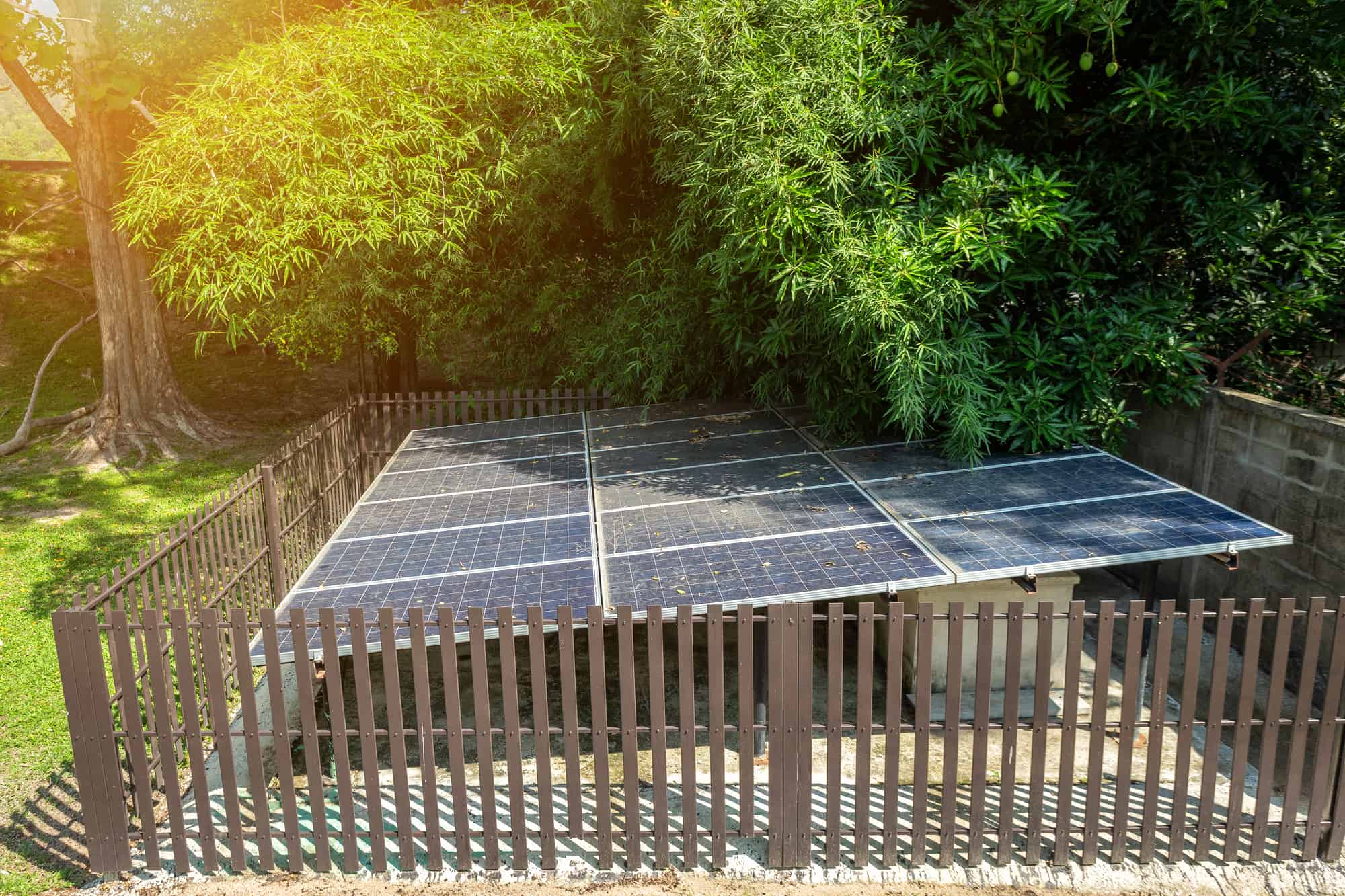When it comes to solar panels, shade can be a real buzzkill. Solar panel not working in shade is a common issue that can significantly impact the efficiency and performance of your solar system. In this article, we’ll dive into the causes of solar panel shading, explore techniques to minimize its effects, and guide you in choosing the most suitable shade-tolerant solar panels for your specific needs.
From understanding the impact of shading on solar panel efficiency to identifying common causes of shading, we’ll cover everything you need to know to ensure your solar panels are working at their optimal capacity, even in less-than-ideal lighting conditions.
Impacts of Shading on Solar Panel Performance: Solar Panel Not Working In Shade
Shading can significantly impact the performance of solar panels, reducing their efficiency and power output. Partial shading occurs when only a portion of the panel is shaded, while full shading occurs when the entire panel is blocked from sunlight.
Effects of Partial Shading
Partial shading can cause a decrease in power output proportional to the amount of shaded area. For example, if 20% of a panel is shaded, its power output may be reduced by approximately 20%. This is because the shaded cells cannot generate electricity, and the current flowing through the panel is limited by the weakest cell.
Effects of Full Shading
Full shading completely blocks sunlight from reaching the panel, resulting in zero power output. This can be a significant problem for systems that rely on solar energy as their primary power source, as it can lead to power outages or reduced performance.
Shading Tolerance
Different types of solar panels have varying degrees of shading tolerance. Monocrystalline panels are generally more tolerant of shading than polycrystalline or thin-film panels. This is because monocrystalline panels have fewer grain boundaries, which can create weak spots where shading can cause significant power loss.
Causes of Solar Panel Shading

Solar panel shading occurs when an obstruction blocks sunlight from reaching the photovoltaic (PV) cells, reducing their ability to generate electricity. Common causes of shading include:
- Nearby trees: Deciduous trees can cause seasonal shading as their leaves grow and block sunlight during the summer months. Evergreen trees can cast shadows throughout the year.
- Buildings and other structures: Tall buildings, chimneys, or neighboring houses can cast shadows on solar panels, especially during certain times of the day or year.
- Improper panel placement or installation: Panels installed too close to obstacles or facing the wrong direction can experience significant shading.
Seasonal Changes and Sun Angles
The impact of shading varies depending on the time of year and sun angles. During the summer months, the sun is higher in the sky, reducing the likelihood of shading from nearby objects. However, during the winter months, the sun is lower in the sky, increasing the potential for shading.
Panel Placement and Installation
Proper panel placement and installation are crucial to minimize shading. Installers should carefully consider the location of trees, buildings, and other potential obstacles when determining the optimal placement for solar panels. Additionally, panels should be installed at an angle that maximizes sunlight exposure throughout the year.
Techniques to Minimize Shading Effects

Shading can significantly impact solar panel performance, reducing energy production and system efficiency. To mitigate these effects, various techniques can be employed, each with its own advantages and drawbacks. This section explores these techniques, providing practical solutions to minimize shading impacts.
Solar panels don’t work efficiently in the shade, so it’s crucial to understand how to design a solar panel system that optimizes sunlight exposure. By considering factors like panel orientation, tilt angle, and shading analysis, you can ensure your solar panels generate maximum power even in shaded areas.
One effective technique is panel repositioning. By adjusting the tilt angle or orientation of the solar panels, it is possible to optimize sunlight exposure and minimize shading from surrounding objects. However, this may require structural modifications or additional mounting hardware, which can add to the installation cost.
Tree Trimming
Tree trimming is another common method to reduce shading. Removing branches or pruning trees that cast shadows on the solar panels can significantly improve sunlight access. However, tree trimming should be done carefully to avoid damaging the trees or compromising their health. Additionally, it may require regular maintenance to prevent new growth from causing future shading issues.
Bypass Diodes
Bypass diodes are electronic devices that can help mitigate the effects of partial shading on solar panels. These diodes allow current to flow around shaded cells, preventing them from blocking the flow of electricity from unshaded cells. This can improve overall system performance, particularly in situations where shading is unavoidable.
Solar Panel Monitoring Systems
Solar panel monitoring systems play a crucial role in detecting and addressing shading issues. These systems continuously monitor the performance of each solar panel and can identify any drop in energy production caused by shading. By providing real-time data, monitoring systems enable homeowners and installers to identify the source of shading and take appropriate corrective measures.
Considerations for Choosing Shade-Tolerant Solar Panels

In shaded environments, shade-tolerant solar panels offer several advantages over traditional panels. They are designed to minimize the impact of shading on power output, making them ideal for installations where shading is unavoidable.
Different types of shade-tolerant solar panels perform differently under varying shading conditions. Monocrystalline and polycrystalline panels are the most common types, with monocrystalline panels generally offering better shade tolerance due to their higher efficiency and lower temperature coefficients.
Selecting the Most Suitable Shade-Tolerant Solar Panels, Solar panel not working in shade
When selecting shade-tolerant solar panels, consider the following factors:
- Shading conditions: Determine the extent and duration of shading at the installation site.
- Panel efficiency: Choose panels with high efficiency ratings to maximize power output under shaded conditions.
- Temperature coefficient: Panels with low temperature coefficients are less affected by heat buildup, which can occur in shaded areas.
- Warranty: Look for panels with comprehensive warranties that cover performance under shaded conditions.
Final Summary
Whether you’re dealing with partial or full shading, there are solutions available to mitigate its impact on your solar panel system. By carefully considering the factors discussed in this article, you can make informed decisions to minimize shading effects and maximize the efficiency of your solar panels, ensuring a reliable and cost-effective source of clean energy.
Q&A
Q: Can solar panels work in the shade?
A: While solar panels can generate some electricity in shaded conditions, their efficiency is significantly reduced compared to unshaded panels.
Q: What are the common causes of solar panel shading?
A: Common causes include nearby trees, buildings, chimneys, and other structures that block sunlight from reaching the panels.
Q: How can I minimize the effects of shading on my solar panels?
A: Techniques include panel repositioning, tree trimming, using bypass diodes, and installing solar panel monitoring systems to detect and address shading issues.
Q: What are shade-tolerant solar panels?
A: Shade-tolerant solar panels are designed to perform better in shaded conditions compared to traditional panels, making them a suitable option for areas with limited sunlight exposure.


